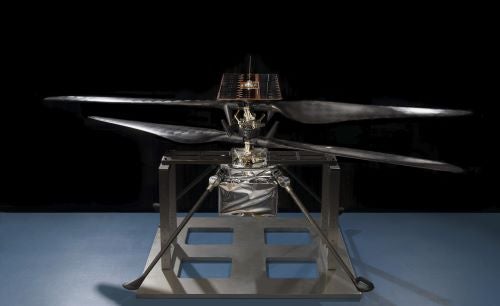Q: Since surface atmospheric pressure on Mars is roughly equivalent to what exists well into the stratosphere on Earth, how would a helicopter be able to generate sufficient lift to get off the ground?
John A. Ferko
Colorado Springs, Colorado
A: Flying a helicopter on Mars, such as the Mars Helicopter that will be traveling to the Red Planet with the Mars 2020 mission, is a bit of a trade-off. The air pressure at the martian surface is equivalent to the air pressure at about 100,000 feet (30,500 meters) on Earth, but the current height record for helicopters on Earth is roughly 40,000 feet (12,200 m). According to staff at NASA’s Jet Propulsion Laboratory (JPL), the softball-sized, 4-pound (1.8 kilograms) Mars Helicopter will compensate for the lower atmospheric density on Mars by using more power and rotating its blades at a higher speed than would be required to lift the craft off the ground on Earth. It will spin its two counter-rotating blades at nearly 3,000 revolutions per minute, or about 10 times as fast as a helicopter on Earth, to stay aloft.
The trade-off, JPL says, is that Mars’ gravity is about 40 percent the strength of Earth’s gravity — so the Mars Helicopter will require less lift to stay airborne. Over the course of 30 days, mission engineers plan to fly the helicopter up to five times, aiming for incrementally longer distances and hoping to reach a distance of a few hundred yards with a maximum flight time of about 90 seconds. Its first flight, however, aims to have the helicopter rise about 10 feet (3 m) straight up and hover for about 30 seconds.
Although the Mars Helicopter project is an exciting one that engineers expect to succeed, there is still a chance that some aspect of this project won’t go as planned. But because the helicopter is simply a proof-of-concept test for future helicopters on Mars, even if this helicopter fails, it will not impact the overall Mars 2020 mission.
Alison Klesman
Senior Associate Editor










